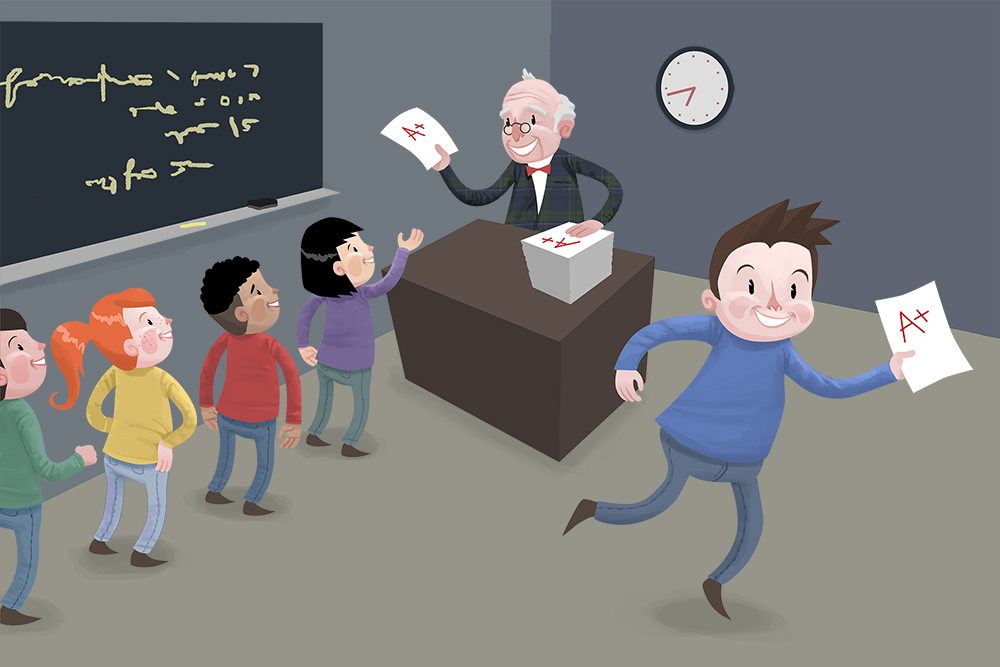

We collected data from over 170 schools, updated this website, wrote a research paper, collected more data the following year and wrote another research paper. At that time, I started working with Chris Healy from Furman University. Then I stopped collecting data until December 2008, when I thought it was a good time for a new assessment. By March 2003, I had collected data on grades from over 80 schools. The rise continued unabated at almost every school for which data were available. I found that grade inflation, while waning beginning in the mid-1970s, resurfaced in the mid-1980s. In the process of writing that article, I collected data on trends in grading from about 30 colleges and universities. This web site began as the data link to an op-ed piece I wrote on grade inflation for the Washington Post, Where All Grades Are Above Average, back in January 2003.

Institutions comprising this average were chosen strictly because they have either published grade data or have sent recent data (2012 or newer) to the author covering a span of at least eleven years. Data on the GPAs for each institution where I don’t have a confidentiality agreement can be found at the bottom of this web page. Note that inclusion in these averages does not imply that an institution has significant inflation. Olaf, SUNY-Oswego, Texas, Texas A&M, Texas State, UC-Berkeley, UC-San Diego, UC-Santa Barbara, Utah, Vanderbilt, Virginia, Wake Forest, Washington-Seattle, Washington State, West Georgia, Western Michigan, William & Mary, Wisconsin, Wisconsin-Milwaukee, Wisconsin-Oshkosh, and Yale. Indiana, Iowa State, James Madison, Kent State, Kenyon, Lehigh, Louisiana State, Miami (Ohio), Michigan, Middlebury, Minnesota, Minnesota-Morris, Missouri, Montclair State, Nebraska-Kearney, North Carolina, North Carolina-Greensboro, North Carolina-Asheville, North Dakota, Northern Arizona, Northern Iowa, Northern Michigan, Northwestern, Oberlin, Penn State, Princeton, Puerto Rico-Mayaguez, Purdue, Purdue-Calumet, Rensselaer, Roanoke, Rockhurst, Rutgers, San Jose State, South Carolina, South Florida, Southern Connecticut, Southern Utah, St. The figure above shows the average undergraduate GPAs for four-year American colleges and universities from 1983-2013 based on data from: Alabama, Alaska-Anchorage, Appalachian State, Auburn, Brigham Young, Brown, Carleton, Coastal Carolina, Colorado, Columbia College (Chicago), Columbus State, CSU-Fresno, CSU-San Bernardino, Dartmouth, Delaware, DePauw, Duke, Elon, Emory, Florida, Furman, Gardner-Webb, Georgia, Georgia State, Georgia Tech, Gettysburg, Hampden-Sydney, Illinois-Chicago. GradeInflation at American Colleges and Universities Once this is accomplished new practices can be designed and policies implemented.National Trends in Grade Inflation, American Colleges and Universities In order to evaluate students more accurately, universities must identify the problems in grading and grading practices. While grades are not a perfect answer to assessing student performance in a course they are still the best answer we have for evaluating students. Among the reasons for higher student grades on the part of professors are: (1) fear of student evaluations (2) avoidance of bad relations with students (3) below average teaching skills (4) lack of experience (5) a lack of clearly stated objectives and (6) job security. Some of the most frequently mentioned causes of grade inflation are: (1) student evaluations of professors (2) student teacher dynamics (3) merit-based financial aid and (4) student expectations. There has been an upward shift in grades without a corresponding upward shift in knowledge gained. Grade inflation impacts university credibility, student courses of study, choices of institution, and other areas.


 0 kommentar(er)
0 kommentar(er)
